A Decade by Decade view of Women’s Fashion in the 20th Century. This 10-part series covers the styles and changes in women’s fashion from 1900 to the year 2000. We discuss everything from designers to fabrics, hem lengths to sleeves. This week we look at vintage women’s fashion from 1950 to 1960. Follow along with us each week as we delve into another decade.
The 1950s gave us poodle skirts, pedal pushers, pencil skirts and pearls. Fashion icons of the time included Marilyn Monroe, Grace Kelly, Audrey Hepburn, Doris Day, and Elizabeth Taylor. Designers including Christian Dior, Cristobal Balenciaga, Pierre Balmain, and Jaques Fath shaped the looks of the era.
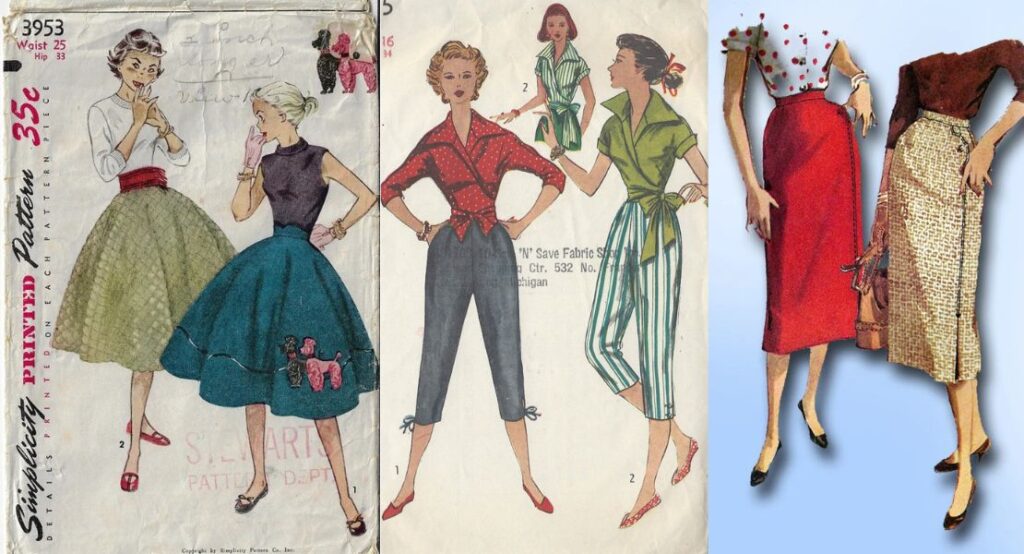
Not to be upstaged by other designers Coco Chanel revived her popularity with her “Boxy Suit” which brought about the slim pencil skirt and shorter fitted jacket worn with the ever-present strand of pearls. Her chemise dress was a simple shape that could be made in a variety of fabrics and could easily be dressed up or down.
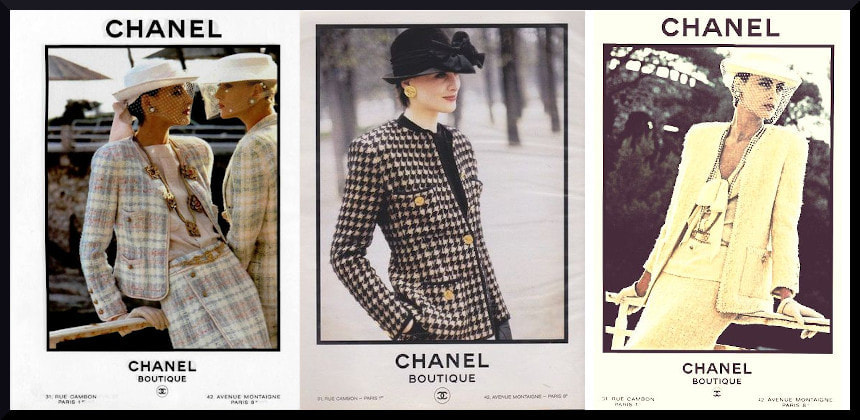
After the war ended, women’s fashion became more formal again. The utilitarian look of the war years was replaced by a more refined style of dress. Hats, gloves, shoes, and matching jewelry adorned suits or dresses. Dresses of the day came in two basic shapes, slim body hugging styles such as the sheath or wiggle dress and the narrow-waisted look with a wide skirt. Suits often included a short peplum-style jacket with narrow pencil skirts. Much of the narrower, more fitted look was imported from Asia as well as the shorter narrower collars adopted by both men’s and women’s fashion. Both styles of dress fell below the knee.
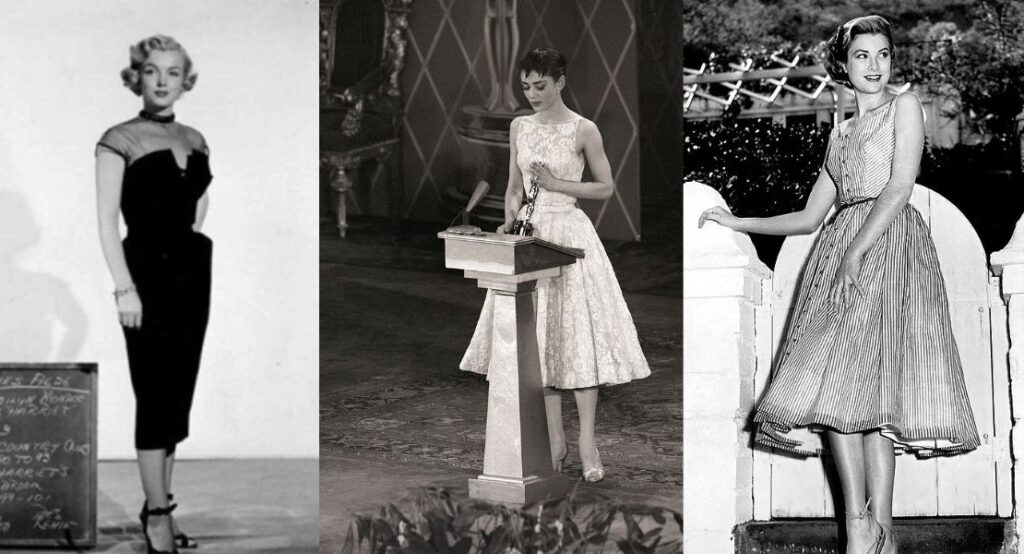
The more sophisticated look of the slim pencil skirt was the business version of said uniform. Worn with pearls and clip-on cluster earrings, a simple pair of matching pumps and a handbag completed the look. Circle skirts with a fitted waist, a soft fuzzy sweater, or a crisp button-up blouse with a Peter Pan collar were the women’s version of the uniform of the day.
Many of the designs during these years were dictated by new synthetic fabrics. Nylon, which previously had only been used for military use, replaced silk in women’s stockings. Created in the early 1950s, polyester, spandex, and other synthetic fabrics allowed for clothing to be made with stretch allowing a more forgiving fit. This led to a much more casual wardrobe essential, pedal pushers or capri pants with a knit top that just skimmed the waist. Many included a matching cardigan, these were known as twin sets. The newer synthetic fabrics allowed for a closer fit that still allowed for ease of movement. This also led to the rise of sportswear in general. Clothing was made to be worn casually so one could participate in outdoor sports and still be seen as fashionable.
By the end of the 1950s, a revolution was about to take place, not only to do with civil rights but fashion as well. Follow along with us as we take on the 1960s next time.
Wear the Look of the 1950s
Explore the other decades by clicking here.
Pin It
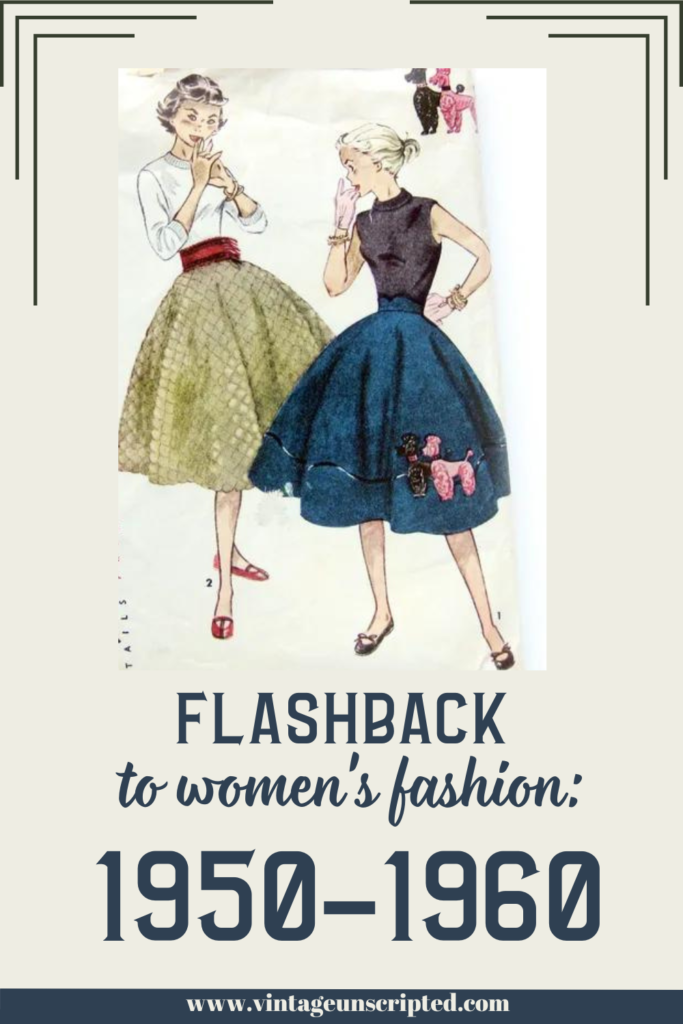

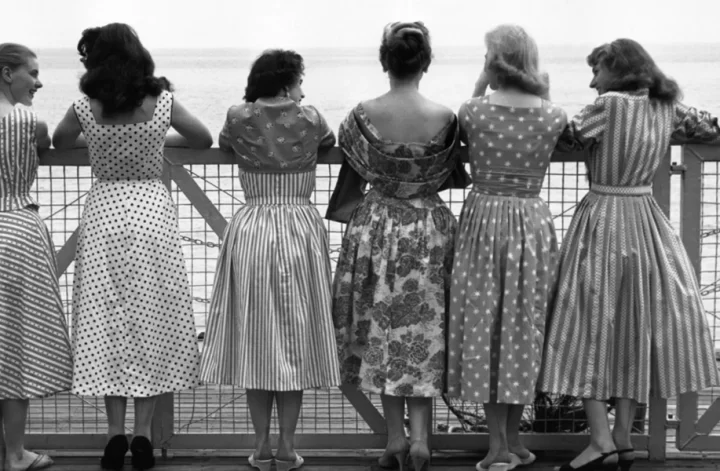
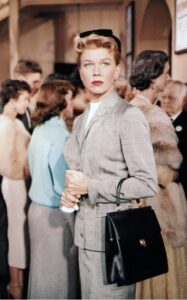
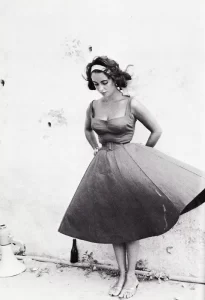
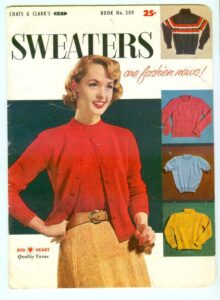
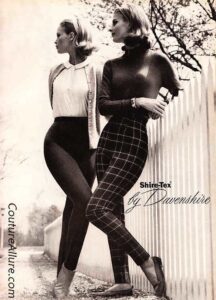
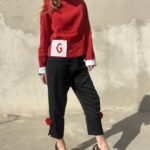
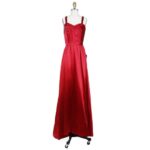
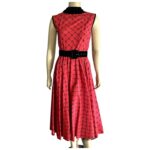
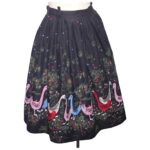
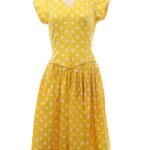

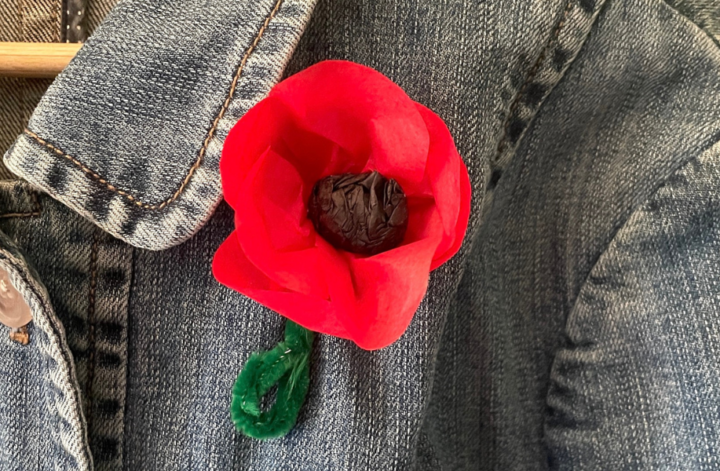


1 comment
I am so there. If I could dress like this era every day, I would be the happiest clam in the chowder.